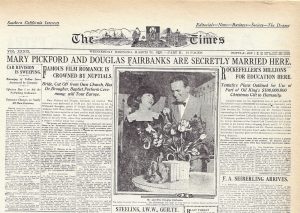 Mary Pickford and Douglas Fairbanks were married on Sunday evening, March 28, 1920 and when the world learned of it three days later, the news was greeted with joy. On the front page, above the fold, the Los Angeles Times declared that the “famous film romance is crowned by nuptials,” almost as if the union had been expected for some time and had finally come to fruition.
Mary Pickford and Douglas Fairbanks were married on Sunday evening, March 28, 1920 and when the world learned of it three days later, the news was greeted with joy. On the front page, above the fold, the Los Angeles Times declared that the “famous film romance is crowned by nuptials,” almost as if the union had been expected for some time and had finally come to fruition.
While movie fans were celebrating Hollywood’s new royal couple, Mary herself was breathing a huge sigh of relief. For almost two years, she had been agonizing as she lived a bifurcated life – making her films as she publicly pretended to be happily married to one man while privately in love with another.
Mary and Doug first met at a party in Tarrytown, New York, in November of 1915, both accompanied by their spouses. As their hostess, vaudeville star Elsie Janis put it after she and Doug and Mary took a long walk around her property, “Mr. Fairbanks and Miss Pickford had become Douglas and Mary by the time we dragged our weary bodies home.”
By early 1917, Doug and Mary had privately declared their love for each other and within months, they had worked out a variety of ruses to see each other, often enlisting trusted friends as beards. Charlie Chaplin was pulled in to be present when photos were taken at the studio, but more intricate plans were laid for their assignations. For instance, Doug and his screenwriter, Anita Loos, would head out on a horseback ride while Mary and her friend and screenwriter Frances Marion made a public point of going to a different stable and then – as prearranged – secretly met up with Doug and Anita. Doug and Mary went off, usually to his brother’s house in the Hollywood hills, and Frances and Anita rode together for an hour or two until they reunited with the couple.
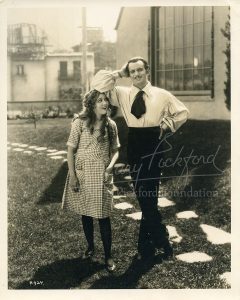 At first, Frances was pleased to see Mary so content and had to admit there were benefits to the affair; Mary was more cheerful than ever and while she had always thought of Mary as pretty, when “she was with Doug, she actually looked sexy.”
At first, Frances was pleased to see Mary so content and had to admit there were benefits to the affair; Mary was more cheerful than ever and while she had always thought of Mary as pretty, when “she was with Doug, she actually looked sexy.”
Mary’s mother knew about the affair and tacitly approved. As Frances said later in life, ” ‘Mama’ loved Mary to be happy and Mary was never lovelier than when she was with Doug. That was enough for Mama – if only they both weren’t married to somebody else.”
As enamored as they were of each other, neither Doug nor Mary were anxious to make any drastic moves. Their stardom was too important to them and it was assumed that fans wanted to put their favorite actors on a pedestal and live vicariously through them. At least that’s what studio chiefs wanted their players to believe to keep them in line. The fact was that when it came to stars divorcing and remarrying, there was no path to follow.
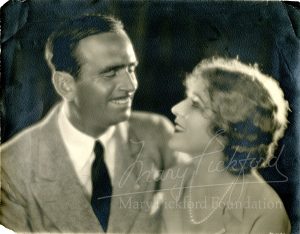 Doug and Mary might have been able to keep their relationship secret but a series of events – both international and domestic – intervened. First, the government reached out to them, along with Charlie Chaplin and Marie Dressler, to go on a nationwide tour to sell war bonds. Both Mary’s mother and Frances urged Mary not to go, but when she insisted, Charlotte went along and was rarely out of camera range. Enough fans and reporters noticed the way Mary and Doug looked at each other that questions were raised, but they kept repeating that they were just friends. The tour affirmed their popularity more than they could have imagined and that gave Doug the confidence he needed to divorce his wife Beth. She had been Doug’s manager and financial advisor, but now he turned to his brother Robert and Mary’s attorney Cap O’Brien for guidance. For $500,000 cash and full custody of their young son, Doug Jr., Beth filed for divorce in the fall of 1918 without naming a co-respondent.
Doug and Mary might have been able to keep their relationship secret but a series of events – both international and domestic – intervened. First, the government reached out to them, along with Charlie Chaplin and Marie Dressler, to go on a nationwide tour to sell war bonds. Both Mary’s mother and Frances urged Mary not to go, but when she insisted, Charlotte went along and was rarely out of camera range. Enough fans and reporters noticed the way Mary and Doug looked at each other that questions were raised, but they kept repeating that they were just friends. The tour affirmed their popularity more than they could have imagined and that gave Doug the confidence he needed to divorce his wife Beth. She had been Doug’s manager and financial advisor, but now he turned to his brother Robert and Mary’s attorney Cap O’Brien for guidance. For $500,000 cash and full custody of their young son, Doug Jr., Beth filed for divorce in the fall of 1918 without naming a co-respondent.
Two months after the war was over, Mary and Doug joined Griffith and Chaplin in announcing the formation of United Artists. More meaningful looks, more questions raised about their relationship. When Beth married an old flame, Jim Evans, and Doug’s box office saw no negative effect, he began, according to one of his biographers, “wheedling, begging and threatening” Mary to divorce Owen. .
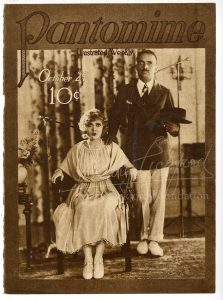 As Doug’s son later explained, “Dad wanted all of Mary – herself and her talent and her fame and her exclusive devotion. And he longed to be able to display their union to the world like a double trophy.”
As Doug’s son later explained, “Dad wanted all of Mary – herself and her talent and her fame and her exclusive devotion. And he longed to be able to display their union to the world like a double trophy.”
Mary was petrified of making a mistake of such a magnitude that it could wipe out everything she had worked for. She turned to Frances and together they decided they were too close to the situation. If anyone from the outside could be trusted to give an honest assessment, it was Frances’s good friend, the writer Adela Rogers St. Johns. As difficult as it was for Mary to let anyone into her private circle, she agreed to invite Adela for tea. Like everyone else who went to the movies, Adela felt she already knew Mary, but the first thing that struck her as Mary introduced herself was that she had never before heard her voice. Adela was enchanted and, for once in her life, more than a bit in awe. As the three of them sat in Mary’s living room, Frances explained they needed her thoughts as a reporter, a fan of moving pictures and someone with a sense of public opinion. And someone they could trust to keep a secret.
Adela knew that Mary and Owen’s marriage had been in name only for years, yet still she was surprised with Mary’s bluntness. “If I get a divorce and marry Douglas, will anyone ever go see my pictures again?” Mary asked, “Do you think they will forgive me?” Then Mary added something that would always echo in Adela’s mind as exemplifying how seriously she took her position: “Above all, there are my people to consider.”
“My people” meant more than just those who depended upon her. Along with the business acumen that served her so well, Mary had almost an innate understanding of this new phenomenon called stardom; the public’s sense of ownership of the personalities they took into their hearts.
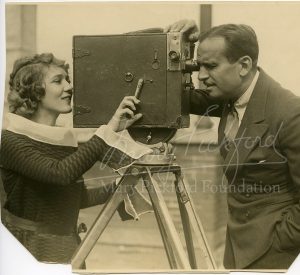 Adela hedged her advice. “I think your chances are better than even if it’s handled carefully… All the world loves a lover.” Overall, she was encouraging, and Mary thanked her for coming, and excused herself. As soon as they were alone, Frances explained how complicated things had become for Mary. In addition to everything else, her adored brother Jack didn’t approve of Doug; he thought he was a charlatan trying to buy his own importance through his association with Mary. Frances and Adela both found Jack charming, yet also knew that was exactly how many saw his relationship with his sister. If Mary lost her stardom, she would be fine – she had enough money to live and support her family comfortably. But there was another nagging question — would Doug still love her if she was no longer a star?
Adela hedged her advice. “I think your chances are better than even if it’s handled carefully… All the world loves a lover.” Overall, she was encouraging, and Mary thanked her for coming, and excused herself. As soon as they were alone, Frances explained how complicated things had become for Mary. In addition to everything else, her adored brother Jack didn’t approve of Doug; he thought he was a charlatan trying to buy his own importance through his association with Mary. Frances and Adela both found Jack charming, yet also knew that was exactly how many saw his relationship with his sister. If Mary lost her stardom, she would be fine – she had enough money to live and support her family comfortably. But there was another nagging question — would Doug still love her if she was no longer a star?
Frances left for New York as soon as Pollyanna, Mary’s first UA film, finished shooting. Frances’s fiancé Fred Thomson, the Army chaplain Mary had introduced her to on the set of Johanna Enlists, was finally coming home from the European War. And on November 1, 1919, the day before their Manhattan wedding, Mary arrived to be matron of honor. As usual, Charlotte was there as well. When they were alone, Mary told Frances she had finally made up her mind – she was willing to risk losing the title of “America’s sweetheart” because “I only want to be one man’s sweetheart.”
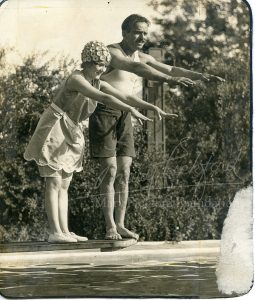 Once the decision was made, Charlotte and their attorney Cap O’Brien started making the necessary arrangements. First, a deal was made with Owen to buy his cooperation for $100,000. He even helped speed up the process by conveniently arriving in Minden, Nevada with his attorney after Mary and Charlotte had been in the state for only a few days. Publicly claiming he was scouting film locations, Owen’s presence allowed him to be served with papers so Mary could go to court the next day.
Once the decision was made, Charlotte and their attorney Cap O’Brien started making the necessary arrangements. First, a deal was made with Owen to buy his cooperation for $100,000. He even helped speed up the process by conveniently arriving in Minden, Nevada with his attorney after Mary and Charlotte had been in the state for only a few days. Publicly claiming he was scouting film locations, Owen’s presence allowed him to be served with papers so Mary could go to court the next day.
She arrived dressed in black with a veil, almost as if she was in mourning for the marriage. The newspapers reported her as being prostrate between sobs, explaining how she had been deserted by a drunkard who berated her at every turn. She was portrayed as a woman who had suffered beyond any normal standards of endurance. She had been felled by the flu at several points over the past year and now she said she was the brink of a physical breakdown. That was, after all, why she was in Nevada – to seek refuge and regain her health. Nevada’s divorce laws were already liberal, but they required a several month residency so Mary’s words were carefully gauged.
“Do I understand you came into the state in good faith, seeking health and nothing else?” asked the judge.
“Yes sir.”
“And you have given up Los Angeles as your residence and your permanent residence is Genoa, Douglas County, Nevada?”
“Until I have regained my health, this will be my home.”
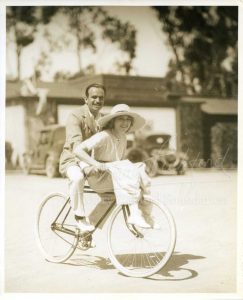 Well, there was obviously a miraculous recovery, because as soon as the decree was granted, Mary and Charlotte, making no public statements, boarded a train to Los Angeles that very evening. When she and her mother arrived home on the morning of March 5, they were surrounded by reporters. Realizing that the rumors would just keep churning until Mary made a statement, they invited a reporter from the Los Angeles Times to their home that evening. The main message was that Mary had no plans for the future except to “devote her life to producing films to gladden the hearts of her admirers.” But she was quoted as saying other things as well – the divorce been “unpremeditated,” the rumors she would marry Doug or anyone else were “absurd,” there had been no financial settlement with Owen and she was planning on returning often to Nevada.
Well, there was obviously a miraculous recovery, because as soon as the decree was granted, Mary and Charlotte, making no public statements, boarded a train to Los Angeles that very evening. When she and her mother arrived home on the morning of March 5, they were surrounded by reporters. Realizing that the rumors would just keep churning until Mary made a statement, they invited a reporter from the Los Angeles Times to their home that evening. The main message was that Mary had no plans for the future except to “devote her life to producing films to gladden the hearts of her admirers.” But she was quoted as saying other things as well – the divorce been “unpremeditated,” the rumors she would marry Doug or anyone else were “absurd,” there had been no financial settlement with Owen and she was planning on returning often to Nevada.
Mary had told Frances she wanted to wait a year until she married Doug, but that resolve crumbled as he gave Mary an ultimatum; marry him now or he was leaving her. They had been in love for two years and he was not waiting any longer. And she was tired of resisting.
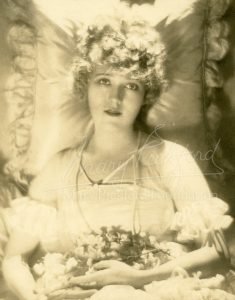 Doug had recently completed renovation of his isolated “hunting lodge” in Beverly Hills and he was already getting in the habit of inviting a variety of people to dinner. However, two of the guests on Friday, March 26 were unusual: the Baptist minister J. Whitcomb Brougher and a certain Mr. Sparks, a local marriage license clerk. Sparks had never been invited to dine with Fairbanks before and knew enough to bring all the proper paperwork with him, but Mary refused to be married on a Friday night. Besides, she was dressed in black and she wanted to wed on a Sunday. And so, 48 hours later, they arrived at Brougher’s home on 4th Street in Los Angeles, along with Charlotte, the actress Marjorie Daw, Doug’s brother Robert and his wife Lorie. Mary wore a lovely white toile gown trimmed in green, and her present to Doug was a portrait of her in her wedding dress. Doug’s present to Mary was the Beverly Hills home he was so proud of, soon to be dubbed Pickfair.
Doug had recently completed renovation of his isolated “hunting lodge” in Beverly Hills and he was already getting in the habit of inviting a variety of people to dinner. However, two of the guests on Friday, March 26 were unusual: the Baptist minister J. Whitcomb Brougher and a certain Mr. Sparks, a local marriage license clerk. Sparks had never been invited to dine with Fairbanks before and knew enough to bring all the proper paperwork with him, but Mary refused to be married on a Friday night. Besides, she was dressed in black and she wanted to wed on a Sunday. And so, 48 hours later, they arrived at Brougher’s home on 4th Street in Los Angeles, along with Charlotte, the actress Marjorie Daw, Doug’s brother Robert and his wife Lorie. Mary wore a lovely white toile gown trimmed in green, and her present to Doug was a portrait of her in her wedding dress. Doug’s present to Mary was the Beverly Hills home he was so proud of, soon to be dubbed Pickfair.
Adela had been right about the world loving lovers; The news was heralded on the front page of newspapers across the country as the closest thing to a formal coronation of the reigning king and queen of movies.1
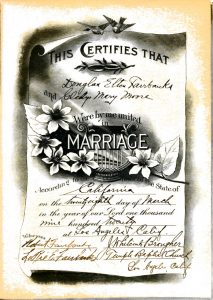 In retrospect, all of the angst and lost sleep Mary had suffered over her decision seemed unnecessary and the pictures of both of them after the wedding reveal how truly happy they were. In the end, it was the fans who clamored to see Doug and Mary on their honeymoon in New York and Europe who put an end to any doubts they had about their careers. The Attorney General of Nevada would soon go to court with questions about the propriety of Mary’s divorce, but that’s a story for another day.
In retrospect, all of the angst and lost sleep Mary had suffered over her decision seemed unnecessary and the pictures of both of them after the wedding reveal how truly happy they were. In the end, it was the fans who clamored to see Doug and Mary on their honeymoon in New York and Europe who put an end to any doubts they had about their careers. The Attorney General of Nevada would soon go to court with questions about the propriety of Mary’s divorce, but that’s a story for another day.
Sources
1. NY Times March 7, 1920; NY Times March 31, 1920.